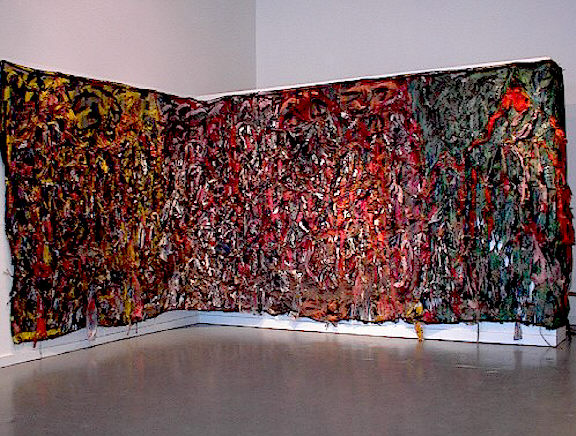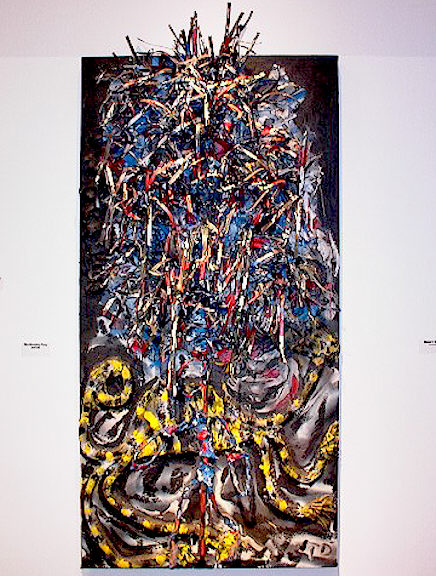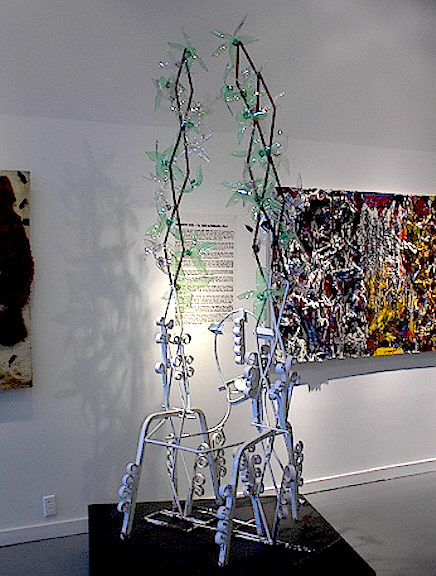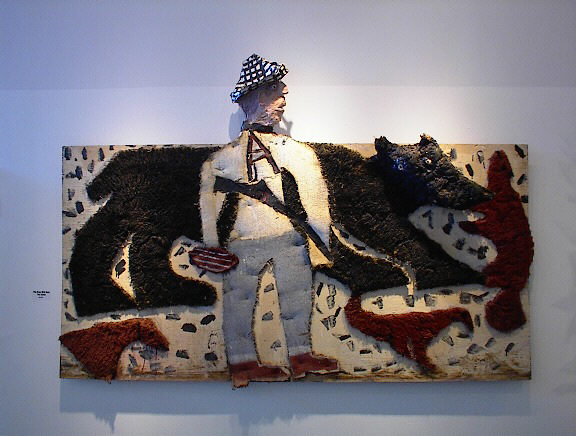Spontaneous Combustion: Igniting the Creative Spark at Mid-Life, 2000
When scholars talk about Thornton Dial, names that surface for comparison often include Georg Baselitz, Anselm Kiefer, Julian Schnabel and Pablo Picasso. A massive tribute to victims of the Bosnian war, which waits patiently outside Dial’s home near Bessemer for its rightful place in one of the world’s major museums, vividly recalls the suffering Picasso’s “Guernica.” And critic Thomas McEvilley has drawn similar parallels between this “Guernica” and other works by Dial.
But the legacy of this prolific former Pullman factory worker, who years ago was the first black self-taught artist to cross from the “outside” into the mainstream, lies not in academic analogues but in his fearless drive to confront life in all its various attitudes. His goal is that we may be better witnesses to the world around us, and his means lie in what has been called “the aesthetics of chaos.”
“In art, we’re used to dealing with order,” says art historian Paul Arnett, whose family has forged a fast friendship with the Dial clan since they first met 13 years ago. “The seeming disorder of things issues of obliteration and annihilation, the forces of entropy and chaos — are what Dial is trying to convey. “
Utterly unafraid of the outcome as he embarks on each quest, Dial has addressed subjects from the last days of Martin Luther King, Jr. to the Ku Klux Klan to the oppressive conditions in the Alabama coal mines. (One dark construction on the latter theme is based on the old saying “Kill a mule, buy another, kill a nigger, hire another.”)
Strutting through many of his paintings and large constructions we find Dial’s proud-stepping tiger, the artist’s own metaphor for the crusading, politically active animal. “Dial’s way out,” Paul Arnett says, “is to become a tiger.”
Here on the gallery’s east wall, we can observe the beast, alert and inquisitive, beneath “The Hanging Tree” (1991). In the northeast window he wraps himself protectively around his mistress in the 1990 painting “The Tiger Stands by His Lady. “
Trees constitute another recurring theme in Dial’s thought. “A tree is a network of ideas, a plan, a design,” the artist once told Paul Arnett’s father, collector William Arnett, “A man got to pick up the pieces before he can start. He got to get organized. Any time you come up with one idea, you get another one. One mind lead to another one. “
Here, irony abounds as the “hanging tree” glistens with patriotic hues while a limp body dangles beneath. In a companion piece from the same year, “The Freedom Tree and the Tree of Life,” we again see a tree defined by that same red, white and blue color scheme. Across a seemingly impassable gulf, however, stands the “tree of life,” burning with the reds, yellows, browns and blacks of mankind’s various races.
“Diana’s Closet,” one in a series of touching homilies to Princess Diana after her death, dominates the southeast corner of the gallery. From a distance one might take it for a masterly paean to Abstract Expressionism. On closer inspection, viewers may begin to discern various articles of clothing concealed within its folds. To Dial, these represent the Princess vast wardrobe, a prerequisite for all the different roles she was required to play.
Dramatically different in style and construction is the tribute to Paul A. (“Bear”) Bryant, “The Bear Will Hunt His Game.” Dating from 1987, this early work shows the football-toting hero on his quest to dominate all other teams that dare to cross his path. These are symbolized by the animal-mascots which surround the central figure.




